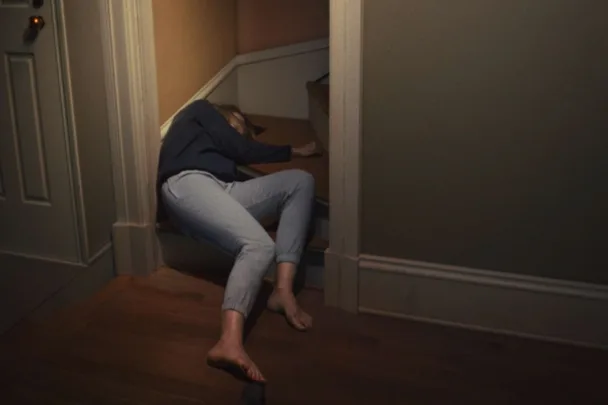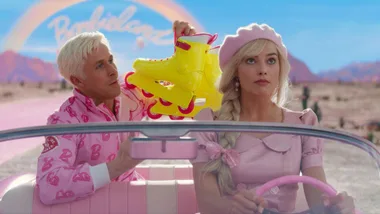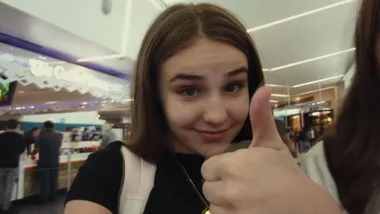Our obsession with true crime is nothing new, but one case in particular has puzzled people for decades. True crime experts, legal counsels and amateur sleuths have still failed to uncover what exactly happened to Kathleen Peterson on the night of her death, when she fell down the staircase at her family home. Her husband at the time, Michael Peterson, has been convicted with her murder and since been released after taking a plea deal, but the question still lingers in everyone’s mind — was this an accident or not.
HBO’s show, The Staircase (now streaming in Australia on BINGE), is the latest project attempting to tackle the mystery, except, as its showrunners will tell you, they’re not trying to provide any kind of definitive answer. Instead, they’re showing you the death, the Peterson family and the trial from multiple angles in a bid to demonstrate that truth is elusive.
One of ways they do this? Shooting multiple scenes which show a different version of Kathleen’s death playing out. One involves her tripping over, tumbling to her death and tragically bleeding out. And, as you can imagine, this was no easy task for Toni Collette to undertake.
“We tried to shoot them in order of how they appear in the series, but we didn’t do them back-to-back because emotionally and physically, it was a very draining thing for Toni Collette to go through.” showrunner Antonio Campos told marie claire Australia during a roundtable interview. “There’s a physical aspect of it, of having to writhe around and blood and the whole stunt aspect. There’s also the emotional aspect of having to go into that mindset and be that vulnerable, and it’s very upsetting. We tried to do them with enough time in between so it didn’t just become this overwhelming thing.”
The scene is nothing short of shocking. It’s a confronting reminder that amid the scandal of the trial and the public revealing of dark, family secrets, that an innocent woman lost her life. Memorialising the vibrant life Kathleen lived before her death was of the upmost importance to the show’s creators, who feel that much of her essence was lost amid the seemingly endless drama.
While the show makes it clear that it is not a documentary and isn’t attempting to portray any sense of truth, there was one aspect that they were insistent on keeping exact. Of course, the infamous staircase.
“We’re not seeking to replicate or make anything identical to the documentary with one exception, which was the staircase,” showrunner Maggie Cohn told marie claire Australia during the same roundtable. “We went into the actual Peterson home and measured the staircase there, so that is the one element of the show which is identical to the actual object”
Despite their best efforts to ensure authenticity, come filming day for Toni’s confronting scene, the crew hit a major snag.
“We have to shoot the stunts on a green staircase, and we were prepared to shoot it with the cameras all set up,” Maggie explained.
“I don’t know who it was, but someone noticed that there was some component of it that was six inches off. We had to pause it for hours and go shoot something else and come back. There’s a whole orchestration to making the staircase work.
I remember everybody going there, like, right. Okay, what do we do now?”
“Yeah, I had put that moment out of my head,” Antonio quipped.
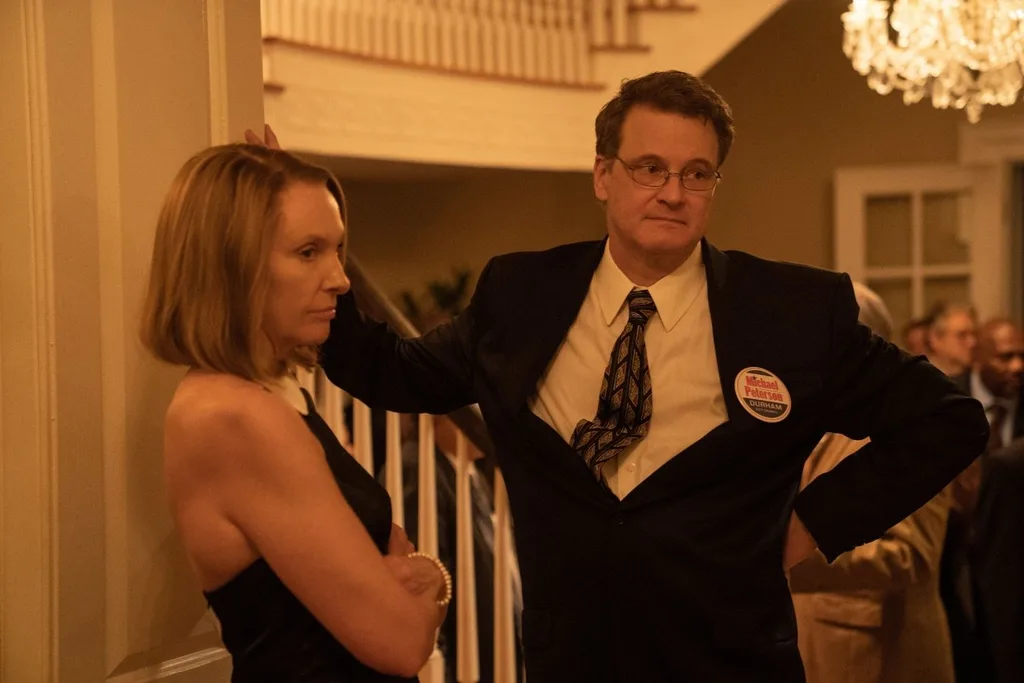
In the wake of Kathleen’s death, the Peterson family found themselves thrown into the global spotlight, with family secrets threatening to unravel the foundations they’d spent years building. From Michael’s bisexuality to the details surrounding the death of Margaret and Martha Ratliff biological mother — no stone was left unturned.
The death of Eliabeth Ratliff was a shocking twist in the case, with the prosecution’s legal team revealing that she too, had been found at the bottom of a staircase. The last person to see her alive? Michael Peterson.
“What’s interesting about true crime stories, is that when an mysterious death or violent act happens and then it’s investigated, is that it reveals so much of what’s under the surface, and I think we’re all fascinated by that,” Antonio said, when asked why the Peterson family in particular were so fascinating. “We all know that there’s always another side to all of us, in every dynamic and every family, and then things come out. There’s something very human about the secrets that come out and the things we learn about people after something tragic happens. I think that’s maybe why we keep coming back to it and why people are so fascinated. Some people would say there’s a fascination with blood and violence, and while that might be true for some people, I think that there’s something deeper at play here than just a perversion or fascination with violence and gore.”
Despite our best efforts to keep a nuanced perspective, our own bias threatens to undermine it at every turn. Even the cast members, when asked whether or not they believe Michael to be guilty, having worked so closely with intimate details of the case, are still left unsure. During a separate roundtable interview, actress Sophie Turner revealed to ELLE Australia that she, alongside her fellow cast members would spend their downtime discussing theories, but it never left them a clearer picture of what transpired that night.
“Truth and justice, innocence and guilt, is all about the story that you tell about a person or an event,” Maggie explained. “For us, it wasn’t necessarily a criticism of the system, as opposed to an exploration of what it truly is. You can have a fact and everyone’s looking at the same picture, but that picture says a million different things to whomever, depending on what you’re bringing to it. For us, that’s what we wanted to hit home — is that in seeking out justice, you can’t leave bias at the door. It’s inherent in us.”
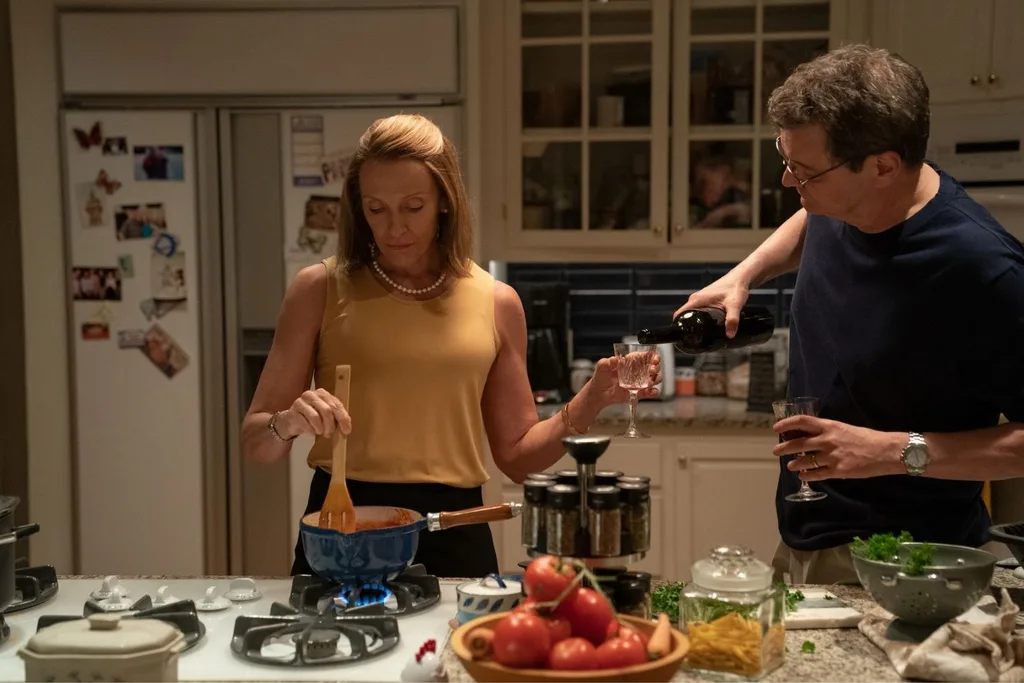
As for why we’re so obsessed with true crime as a genre, Maggie believes it stems from a sense of fear and control over the unknown.
“It’s about control,” Maggie said. “We want to understand why bad things happen, because we don’t want them to happen to us or to a loved one. When most people sit down and turn on these true crime shows and documentaries, it’s about trying to understand ourselves and humanity. We’re desperately seeking out the idea that there’s some rulebook, and that if we follow it, we’re going to be safe. We want to believe that if we do A, B, and C, that we’re going to have some sort of ability to control our destiny, our fate.”
It’s a scary realisation, but one with a lot of truth behind it. More than our fascination with the macabre, this case is a harrowing reminder that things can go wrong, and even turn fatal, in the blink of an eye.
So, while The Staircase is based on a very real story, the show is by no means attempting to recreate a version of one singular truth. Rather, it forces us to ask questions of others and of ourselves that we may not otherwise have considered.
“At the end of the series, you’re going to have a great deal more perspective on this case than you might have going in, even having seen the documentary or read a lot of stuff online.” Antonio said. “If you’re looking for very clear answers, this is not a case that gives you those. At the end, we hope that you leave with a better understanding of the grey areas and the unknown. We explore the different versions of this thing deeper than anyone else could, because we have the luxury of production, special effects, stunts and visual effects, so we could create depictions that probably come closer to what could have happened that night than someone else could have done.”
The Staircase is available to stream now on BINGE. Sign up for a free trial here.
